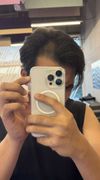community Saved hairline. 2.5 year transformation. 2.5 years of 0.5mg finasteride + RU (1.5g spread over 2.5 years)
A user's 2.5 year transformation of using 0.5mg finasteride and RU58841 to combat hair loss, with the possibility of increasing the RU for further regrowth.
